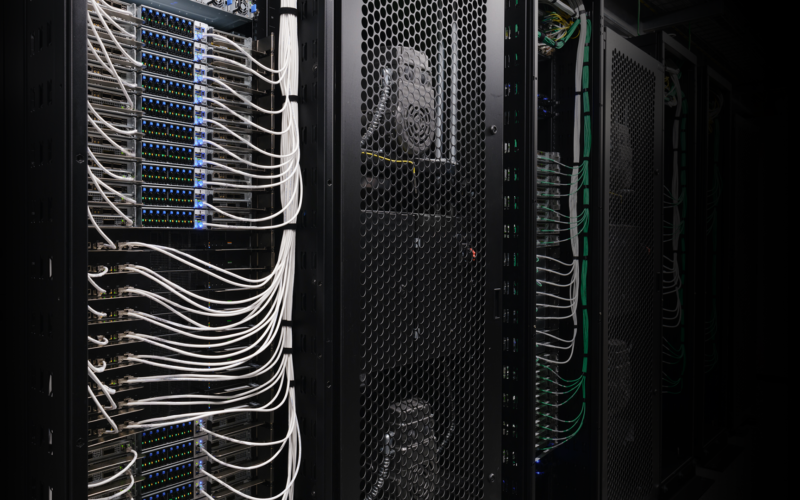Nvidia Corp. said today it wants to help organizations plan and build advanced, future-proof “artificial intelligence factories” to support a new generation of intelligent applications that will come online in the years ahead.
When Nvidia talks about AI factories, what it really means is high-performance and secure data centers designed to “manufacture intelligence,” and it recognizes that the task of building them can be daunting for any enterprise.
The challenge is that organizations must navigate uncharted waters, because no one has built AI factories before. With the rapid pace of development in large language model capabilities and software frameworks, best practices and standardized approaches for building such data centers are still in their infancy. This makes it difficult to invest in data center infrastructure with any confidence.
Nvidia wants to change that, and to do so it is unveiling a series of Enterprise Reference Architectures, or blueprints that can help organizations to ensure their AI factories can evolve and scale up to support the latest innovations for years to come.
The blueprints are said to provide detailed recommendations on the full-stack hardware and software needed for AI factories, and guidance on aspects such as the most optimal server, cluster and network configurations.
According to Nvidia, by using its Enterprise RAs, companies will be able to build and deploy “cost-effective accelerated infrastructure” that’s interoperable with various third-party hardware and software components, so it can easily be updated in future.
Naturally, Nvidia believes that most organization’s AI factories will need to integrate lots of its own hardware, so the reference architectures provide recommendations for Nvidia-certified servers featuring its graphics processing units, which are the workhorse for most AI applications.
The reference architectures also provide guidelines for AI-optimized networking using the Nvidia Spectrum-X AI Ethernet platform and the company’s BlueField-3 data processing units to ensure peak performance and the flexibility to scale in future.
Nvidia’s AI Enterprise platform, which includes microservices such as Nvidia NeMo and Nvidia NIM for building and deploying AI applications, is another component of the reference architectures. So is Nvidia Base Command Manager Essentials, which provides tools for infrastructure provisioning, workload management and resource monitoring.
The AI chip leader said its blueprints will be made available to companies through its server manufacturing partners, such as Dell Technologies Inc., Hewlett-Packard Enterprise Co., Super Micro Computer Inc. and Lenovo Group Ltd. That means enterprises still have a lot of flexibility in terms of the underlying server platforms they want to use to power their AI factories.
Perhaps the biggest benefit of using Nvidia’s reference architectures is being able to get up and running faster, as customers can simply follow its structured approach instead of trying to figure things out for themselves. Nvidia also professes confidence that the blueprints will ensure companies can squeeze maximum performance out of their server hardware.
The other key advantage has to do with scale. The future-proofed reference architectures are designed in such a way that they can easily be upgraded as more innovations in terms of hardware and software become available.
“Enterprise RAs reduce the time and cost of deploying AI infrastructure solutions by providing a streamlined approach for building flexible and cost-effective accelerated infrastructure,” said Bob Petter, vice president and general manager of enterprise platforms at Nvidia.
Although following the blueprints inevitably requires making a commitment to using Nvidia’s hardware and software, it’s likely that many organizations will do so, said Holger Mueller of Constellation Research Inc. According to the analyst, most enterprises simply don’t have the necessary skills and experience to go about creating the infrastructure for AI projects by themselves. And they’re not helped by the fast-moving nature of AI.
“Nvidia plays a key role in making almost every generative AI project work, and its blueprints will make it much easier for organizations to build and upgrade their on-premises AI architectures,” Mueller said. “So long as enterprises are happy using Nvidia’s chips, and many are, this is a win-win scenario. The enterprise gets to go live with their AI projects sooner, while Nvidia bags another long term customer.”
Photo: Nvidia
Your vote of support is important to us and it helps us keep the content FREE.
One click below supports our mission to provide free, deep, and relevant content.
Join our community on YouTube
Join the community that includes more than 15,000 #CubeAlumni experts, including Amazon.com CEO Andy Jassy, Dell Technologies founder and CEO Michael Dell, Intel CEO Pat Gelsinger, and many more luminaries and experts.
THANK YOU
Source link
lol

